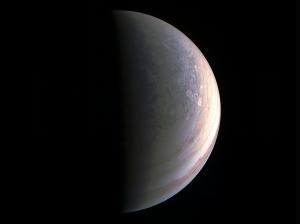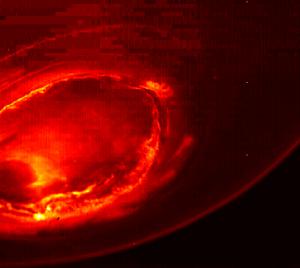
Stargazing Night - Rhythm and Roots 2016
- Where:
- Frosty Drew Observatory
- When:
- Friday September 2, 2016 at 7:30 p.m.
- Cost:
- $1 Suggested Donation per Person
Tonight is Stargazing Night at Frosty Drew Observatory and the forecast is looking a bit grim. We can expect partly cloudy skies at sunset becoming mostly cloudy as nighttime sets in. This is rather unfortunate being that the New Moon happened last night, offering us fabulously dark skies to geek out with. Regardless, the annual Rhythm and Roots music festival is taking place in Ninigret Park (home to Frosty Drew Observatory) this weekend and will bring with it an increase in artificial light and quite loud (awesome!) tunes. Leaving us with a less than optimal night.
We plan to open the Observatory at 7:30 tonight. In the Observatory, telescopes will start off on standby as we monitor conditions on site. If skies look okay, we will showcase Saturn’s rings, Mars, and anything else we can sneak a peek at. Note that the Nature Center and Sky Theatre will remain closed tonight due to the festival in the park. We will stay open until 10:00 p.m. or until clouds chase us out, whichever comes later.
Overall, tonight does not appear to be the best night out. The super thin 3% waxing crescent Moon will hang delicately in the western sunset sky and would have offered up a nice night of dark sky watching. Though the increasing clouds will hammer those prospects. Also, the Rhythm and Roots festival, though an awesome time, will bring large crowds and loud music to the park, which will result in a rowdier than usual visitor base to the Observatory. When visiting, kindly inform the festival parking staff that you are visiting Frosty Drew Observatory and they will let you pass. Note that festival parking staff is unaware of Frosty Drew scheduling so do not let them turn you away with a mention that Frosty Drew is closed. We will stay open until 10:00 p.m. at the earliest and will post a “Closing up” message to our Twitter (@FrostyDrewOBSY) and Facebook when we decide to pack it in for the night. So stop in for good tunes, lively crowds, and a quick astro-fix tonight at Frosty Drew. Clouds not allowed!
-------------------------------------------------------------------------
Weekly Happenings
Scott MacNeill
This coming Thursday, September 8, 2016, the NASA Origins, Spectral Interpretation, Resource Identification, Security-Regolith Explorer (OSIRIS REx) spacecraft will launch from Cape Canaveral, FL. OSIRIS REx’s mission is to rendezvous with near-Earth asteroid - Bennu, collect a 2.1-ounce material sample from the asteroid, and return that sample to Earth on September 24, 2023. The science objectives of the mission is to get a close up analysis of the history of the Solar System, notably how the planets formed and how life began. Asteroids like Bennu hold clues to the early Solar System and may contain the molecular prerequisites to the origins of life. Additionally, analyzing the returned sample will help us better understand how to deflect or prevent the relatively high potential for an impact event on Earth by Bennu in the late 22nd century. The mission will also attempt to answer questions related to asteroid resource mining, enabling us to build larger spacecraft to explore the Solar System and beyond. ORIRIS REx is the third mission of the fabulous NASA New Frontiers program, a program with many high profile missions including New Horizons (Pluto) and Juno (Jupiter). The seven year mission starts this week. Get on board and gear up for amazing things at the OSIRIS REx Mission page.
This past Saturday, August 27th, the NASA Juno spacecraft completed its first of 36 orbital flyby maneuvers of Jupiter. The current orbital pattern, called “capture orbit” is quite large and takes 53.4 days to complete one orbit. Each orbit has a furthest point from Jupiter (apojove) at a distance of 5 million miles and a closest point (perijove) at a mere 2,500 miles . On Saturday, Juno reached perijove and this time, flew by with all science instruments rocking. Our first views and data on Jupiter’s polar regions are in, and the views are fabulous! Jupiter apparently has no latitudinal bands (like the stripes we see around Jupiter’s equator), is quite blue in color, and does not have the fabled hexagon that we see on Saturn’s north pole. Additionally, the Italian Space Agency’s (ITA) Jovian Infrared Auroral Mapper (JIRAM) was able to capture our first ever view of the stunning auroras over Jupiter’s south pole. Though all these amazing tidbits are just that, a taste of things to come, as Juno closes in on its science orbital patter of 14 day revolutions later this October. Visit the NASA Juno Mission and catch up on the amazing things Juno is doing!
-Scott



